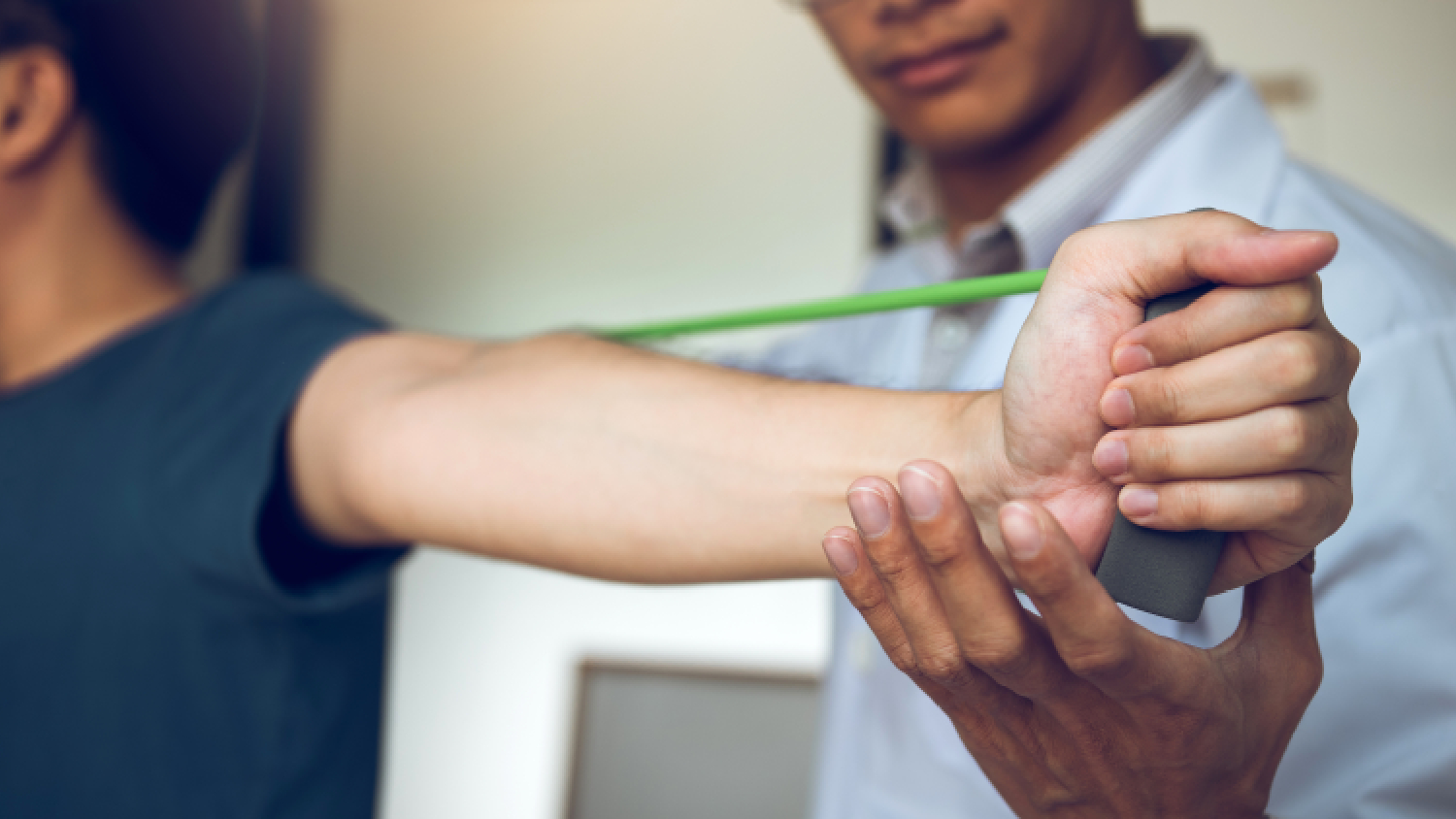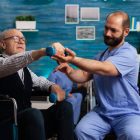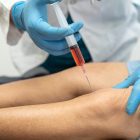Synopsis
Chronic elbow discomfort, often stemming from overuse syndromes, requires a highly focused therapeutic strategy. Specialized physiotherapy for tennis elbow is the gold standard for non-surgical resolution, aiming to reduce tendon irritation and restore forearm muscle resilience. This article details the benefits of targeted elbow pain physiotherapy, which addresses both lateral and medial epicondylitis. Patients suffering from medial tendon issues will benefit from specific protocols for physio for golfers elbow, which employs unique strengthening techniques. Even post-trauma, addressing residual immobility requires diligent elbow stiffness physiotherapy to regain full range of motion. Utilizing specialized physical therapy for tennis elbow provides a clear pathway to functional recovery. Finding the right professional for comprehensive physio for elbow pain care is crucial. Consistent physiotherapy for tennis elbow minimizes the need for more invasive treatments. Expert elbow pain physiotherapy ensures a safe return to activity. Dedicated physio for golfers elbow protocols accelerate healing. Meticulous elbow stiffness physiotherapy restores vital mobility. Advanced physical therapy for tennis elbow is key for long-term relief, and professional physio for elbow pain guides the entire recovery process. Specialized physiotherapy for tennis elbow provides lasting functional gains. Comprehensive elbow pain physiotherapy ensures all underlying issues are addressed. Targeted physio for golfers elbow and dedicated elbow stiffness physiotherapy are essential for a complete recovery, proving the value of expert physical therapy for tennis elbow and committed physio for elbow pain.
Table of Contents
- The Overuse Epidemic- Tennis Elbow and Golfer’s Elbow
- Advanced Protocols in Physiotherapy for Tennis Elbow
- Specialized Physio for Golfer’s Elbow Techniques
- Comprehensive Elbow Pain Physiotherapy for Relief and Stability
- Addressing Post-Trauma- The Need for Elbow Stiffness Physiotherapy
- Beyond Exercise- Adjunctive Physical Therapy for Tennis Elbow Modalities
- The Role of the Physio for Elbow Pain Specialist
- The Orthocure Advantage- Integrated Elbow Care Solutions
- Partnering with Orthocure for Durable Elbow Function
The Overuse Epidemic- Tennis Elbow and Golfer’s Elbow
Lateral and medial epicondylitis, commonly known as tennis elbow and golfer’s elbow, are the hallmarks of repetitive strain injuries, affecting individuals far beyond the courts and courses. These conditions arise when the tendons in the forearm are chronically overloaded, leading to micro-tears and degeneration. Tennis elbow causes pain on the outer side of the elbow due to wrist extensor strain, while golfer’s elbow causes pain on the inner side due to wrist flexor strain. Both are intensely painful and significantly impair grip strength and fine motor control, demonstrating that an effective physio for elbow pain strategy must focus on correcting the chronic overload that initiated the problem. Ignoring these early signs risks the degeneration becoming severe and prolonged.
Advanced Protocols in Physiotherapy for Tennis Elbow
The specialized treatment of lateral epicondylitis requires advanced physiotherapy for tennis elbow protocols that target tendon health directly. The gold standard technique involves eccentric strengthening, where the forearm muscles are loaded as they lengthen. This specific training method is scientifically proven to promote collagen remodelling and build resilience in the damaged tendon, accelerating healing far more effectively than isometric or concentric exercises alone. Furthermore, expert physiotherapy for tennis elbow includes manual techniques, such as deep transverse friction massage, to break down restrictive scar tissue and improve blood flow, reducing pain and speeding up the overall recovery process for this common, debilitating condition.
Specialized Physio for Golfer’s Elbow Techniques
Medial epicondylitis demands an equally specialized approach, tailored specifically for physio for golfers elbow . While the principle of eccentric loading remains crucial, the exercises target the wrist flexor and pronator muscles on the inside of the forearm. Protocols for physio for golfers elbow often include forearm stretching routines to restore muscle length and manual therapy to address any associated trigger points in the forearm and biceps. Correcting grip dynamics and identifying underlying issues in the shoulder or upper back that may be contributing to the strain are also vital components. This holistic elbow pain physiotherapy ensures that the entire kinetic chain is optimized, preventing the chronic overload from recurring at the medial epicondyle.
How does eccentric strengthening specifically aid tendon healing?
Comprehensive Elbow Pain Physiotherapy for Relief and Stability
A comprehensive approach to elbow pain physiotherapy addresses the root cause of discomfort, whether it is an overuse injury or a biomechanical fault. Treatment integrates pain management modalities—such as ultrasound or laser therapy—with structural correction, including joint mobilizations to the elbow and wrist. Furthermore, effective elbow pain physiotherapy involves strengthening the entire arm complex, ensuring that the forearm muscles are supported by a strong shoulder girdle, thereby minimizing strain during gripping or lifting. Utilizing a systematic physical therapy for tennis elbow approach ensures that every step of the rehabilitation is measured and tailored to the individual’s specific occupational or athletic demands.
Addressing Post-Trauma- The Need for Elbow Stiffness Physiotherapy
The elbow joint is notoriously prone to stiffness following trauma, fracture, or surgery, making early and diligent elbow stiffness physiotherapy non-negotiable for regaining full function. Immobilisation, while necessary for healing, causes the joint capsule and surrounding soft tissues to shorten, severely restricting both flexion and extension. Protocols for elbow stiffness physiotherapy involve precise, sustained manual joint mobilizations, often paired with heat therapy, to encourage soft tissue extensibility. The therapist guides the patient through rigorous, controlled exercises to restore the full range of motion, ensuring that residual stiffness does not become a permanent functional limitation.
What are the risks of ignoring elbow stiffness after a fracture?
Beyond Exercise- Adjunctive Physical Therapy for Tennis Elbow Modalities
Specialized care often integrates several adjunctive modalities to accelerate healing and pain relief alongside therapeutic exercise. Advanced physical therapy for tennis elbow can utilize techniques such as dry needling to release deep trigger points in the extensor muscle mass, reducing chronic tension. Furthermore, therapeutic taping, including specialized physio tape for tennis elbow applications, can be used to offload the stressed tendon during daily activities, allowing for safe continuation of light function while the healing progresses. This multifaceted approach ensures that the patient receives both immediate symptomatic relief and long-term structural correction, making the physical therapy for tennis elbow protocols highly effective.
The Role of the Physio for Elbow Pain Specialist
A dedicated physio for elbow pain specialist is crucial for navigating the complexities of chronic tendon injuries and post-trauma stiffness. They possess the expertise to differentiate between tendonitis and related conditions like nerve impingement or radial head issues. Their critical role involves not only administering manual therapy but also analyzing the patient’s grip technique, lifting habits, and ergonomic setup to identify the contributing factors that caused the initial overload. The specialist provides the education and customized physio for golfers elbow or tennis elbow exercises necessary to empower the patient to self-manage and prevent future recurrence, thereby ensuring the durability of the physio for elbow pain relief.
How does a physiotherapist assess the cause of chronic elbow pain?
The Orthocure Advantage- Integrated Elbow Care Solutions
ORTHOCURE CLINICS AND GYMS provides unparalleled, integrated solutions for elbow conditions. Our specialized team, including Orthopaedic Doctors and expert Physiotherapists, collaborates to deliver advanced physiotherapy for tennis elbow and other complex conditions. Our commitment to the unique 4 Point Protocol ensures that treatment is structurally corrective, moving beyond temporary relief. We utilize gold-standard technology, including specialized strength-testing equipment, to precisely measure and rebuild the endurance of the forearm muscles, which is vital for sustained recovery from chronic tendonitis. Our meticulous approach to elbow stiffness physiotherapy and physio for golfers elbow guarantees a complete return to functional capacity.
What is Orthocure’s approach to treating chronic tendonitis?
Partnering with Orthocure for Durable Elbow Function
The services offered by ORTHOCURE CLINICS AND GYMS encompass the full spectrum of recovery, from acute injury to long-term wellness. Our ultimate USP is our dedication to Structural Correction and providing expert physical therapy for tennis elbow and elbow pain physiotherapy . By choosing ORTHOCURE CLINICS AND GYMS, you gain access to a protocol-driven, evidence-based pathway guided by experienced specialists, ensuring that you overcome chronic elbow discomfort and confidently return to a life of unrestricted grip strength and functional movement.
FAQs
What are the primary techniques used in physiotherapy for tennis elbow to promote tendon healing?
The primary techniques used in physiotherapy for tennis elbow focus on promoting collagen remodelling through controlled stress, notably eccentric strengthening. This involves prescribing exercises where the wrist extensors are loaded as they lengthen, which is scientifically proven to enhance tendon structure and resilience. Additionally, a specialist utilizes manual techniques like deep friction massage to stimulate blood flow and break down restrictive scar tissue at the common extensor origin. This comprehensive approach, which is the core of effective physical therapy for tennis elbow, aims to permanently strengthen the damaged tissue rather than merely mask the pain.
How does physio for golfers elbow differ from the treatment protocol for tennis elbow?
Physio for golfers elbow differs because it targets the wrist flexor and pronator muscles on the inner side of the elbow, while tennis elbow protocols focus on the outer extensor muscles. Although both rely on the principle of eccentric strengthening, the specific exercises and stretches are reversed to load the medial tendon group. Furthermore, the assessment for physio for golfers elbow often places more emphasis on grip analysis and the biomechanics of shoulder rotation, ensuring that the entire chain contributing to the chronic medial strain is addressed for complete elbow pain physiotherapy relief.
How important is early intervention for a successful tennis elbow physiotherapy treatment outcome?
Early intervention is critically important for a successful tennis elbow physiotherapy treatment outcome, as chronic tendonitis can take significantly longer to heal than acute strain. Consulting a specialist at the first signs of physio for elbow pain allows the therapist to immediately modify the patient’s aggravating activities and initiate controlled, specific loading. This prevents the condition from progressing into a severe degenerative state where pain is constant and function is severely limited. Timely action ensures the tendon tissue is managed efficiently, drastically reducing the overall recovery time and improving the long-term prognosis.
Can elbow stiffness physiotherapy restore full range of motion after a fracture?
Yes, elbow stiffness physiotherapy is often essential for restoring full range of motion after an elbow fracture, which can severely compromise mobility due to scar tissue and joint capsule tightening. The therapy involves precise, sustained manual joint mobilizations, often combined with heat and therapeutic stretching, to encourage the lengthened healing of soft tissues. This intensive, medically supervised work is crucial because the elbow’s sensitivity to stiffness means that any residual loss of movement can become permanent, making diligent elbow stiffness physiotherapy a vital component of post-trauma recovery.
What structural issues does physical therapy for tennis elbow address to prevent recurrence?
Physical therapy for tennis elbow addresses structural issues by strengthening the stabilizing muscles of the wrist and forearm and correcting overall upper limb biomechanics to prevent recurrence. The therapist not only strengthens the wrist extensors but also ensures the shoulder and scapular muscles are strong enough to support the arm during activity, reducing compensatory strain on the elbow. This structural focus, which is a key part of the holistic physio for elbow pain approach, empowers the patient with durable resilience, ensuring their functional activities do not lead to a relapse of tendon irritation.
What modalities are typically used in elbow pain physiotherapy for pain and inflammation management?
In elbow pain physiotherapy, various modalities are typically used to manage acute pain and inflammation, creating a window for effective therapeutic exercise. These include therapeutic ultrasound or laser therapy, which aim to promote tissue healing at a cellular level and reduce inflammation in the tendon. Additionally, cryotherapy (ice) and electrical stimulation (TENS) may be employed for symptomatic relief. These techniques, applied strategically by a specialist as part of the physiotherapy for tennis elbow plan, are essential for calming the acute symptoms and allowing the patient to safely begin the crucial strengthening phase.
How is patient education about ergonomics integrated into tennis elbow physiotherapy treatment?
Patient education about ergonomics is deeply integrated into tennis elbow physiotherapy treatment because the condition is fundamentally an overuse injury related to work or sport. The therapist analyzes the patient’s home or work setup—such as typing posture, mouse use, or tool gripping—to identify and correct the specific movements causing tendon overload. This includes advising on appropriate grip size for tools, adjusting chair and desk height, and implementing structured rest breaks. This modification of daily habits is non-negotiable for long-term success and is a core preventative aspect of the entire physio for golfers elbow protocol.





